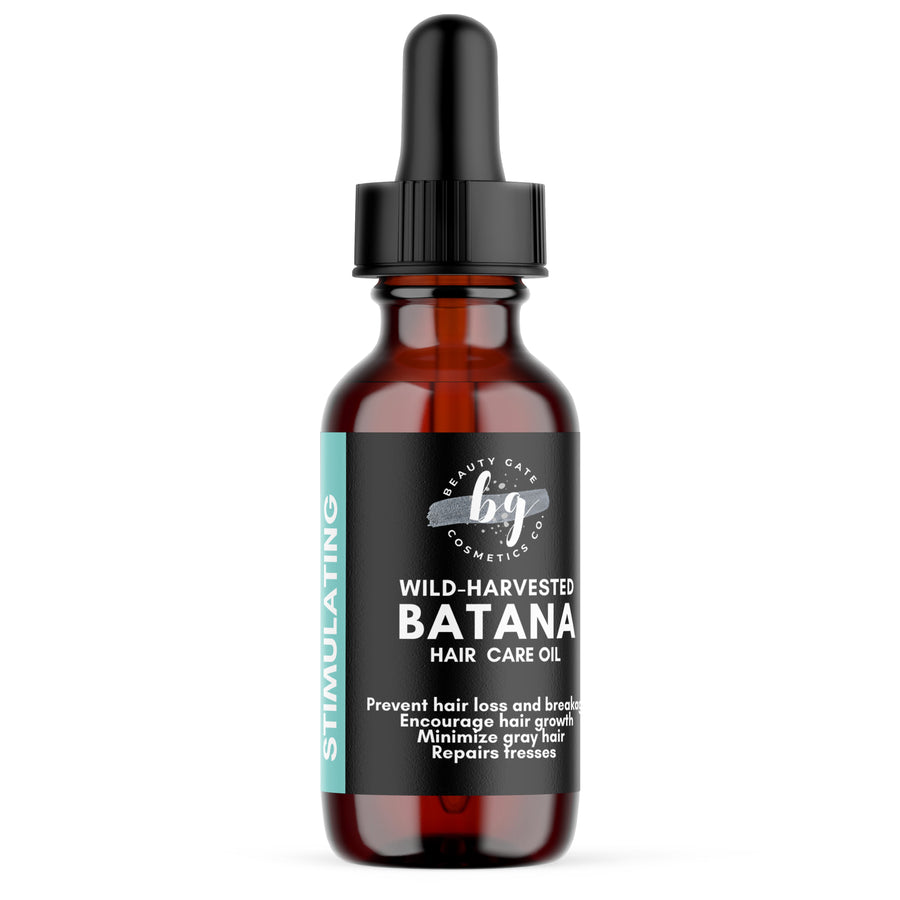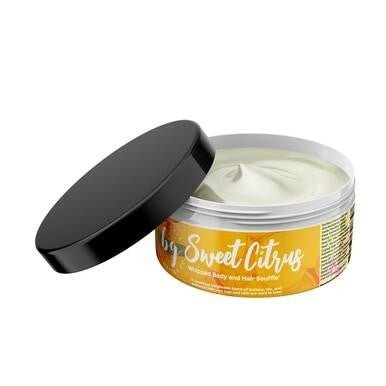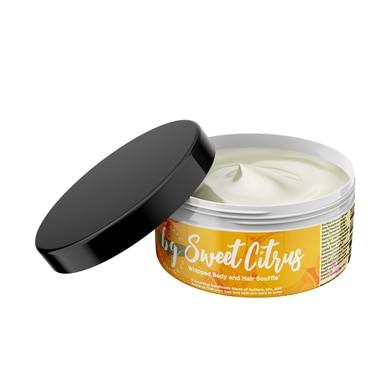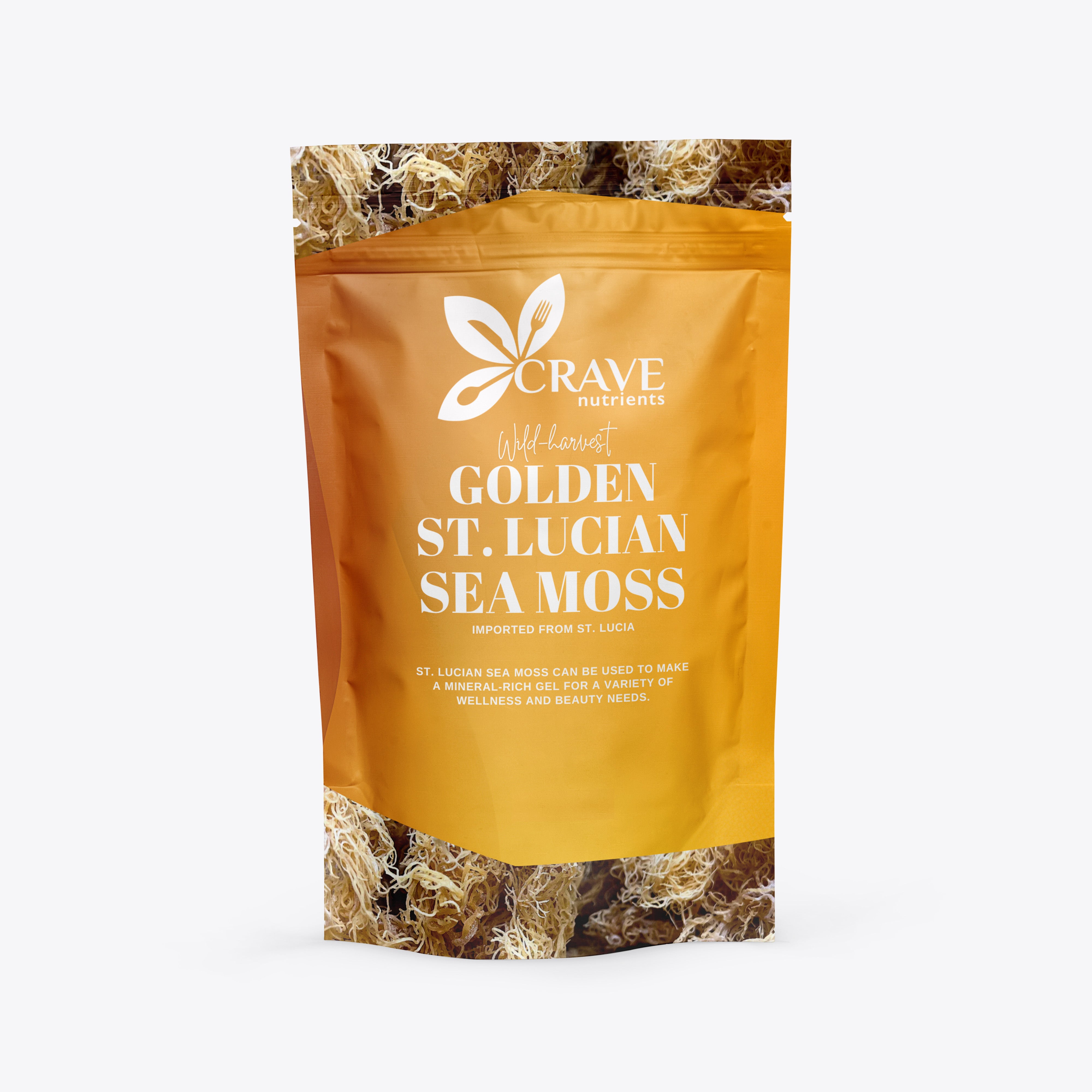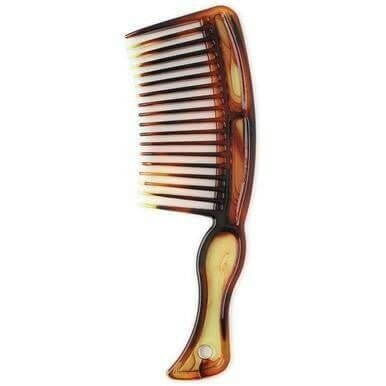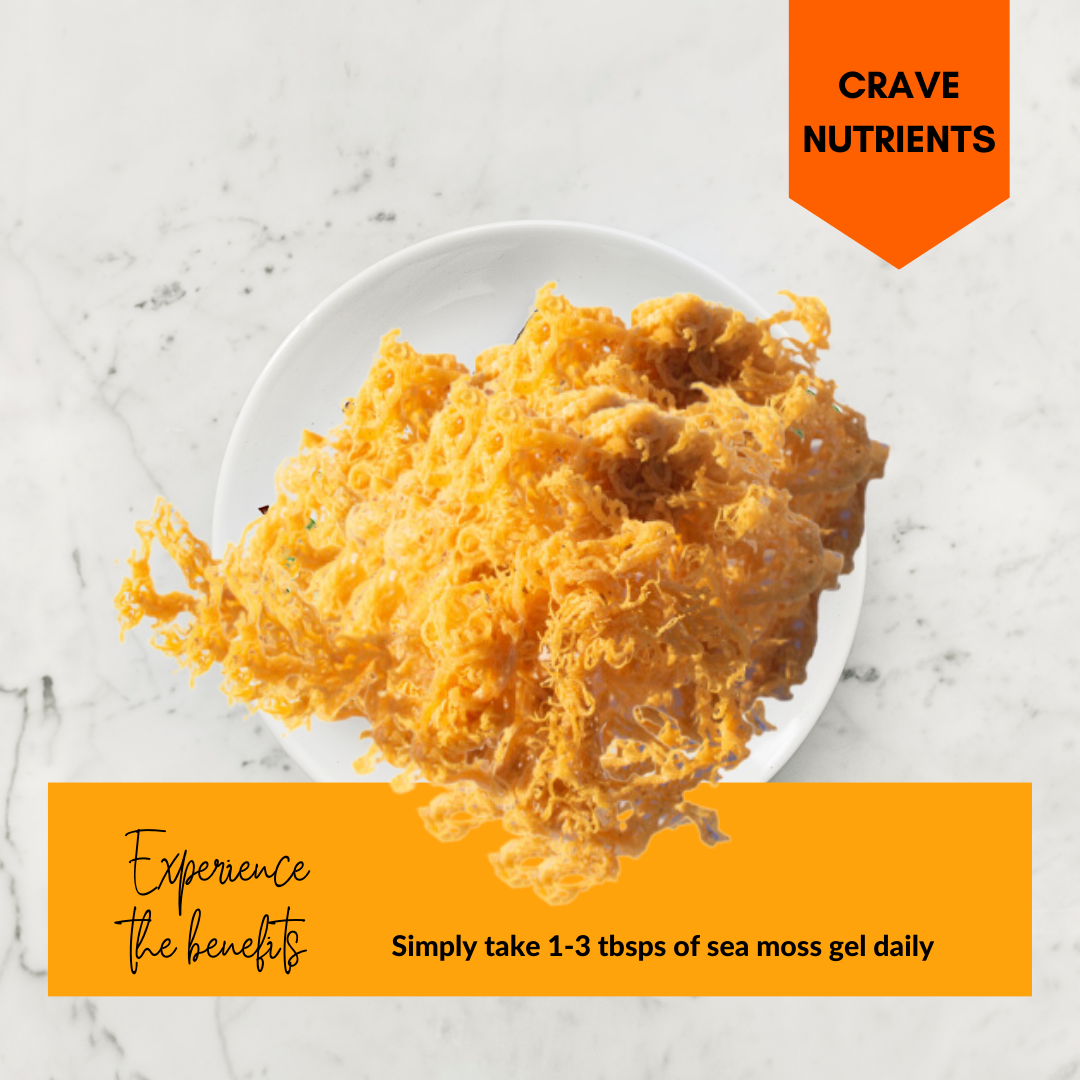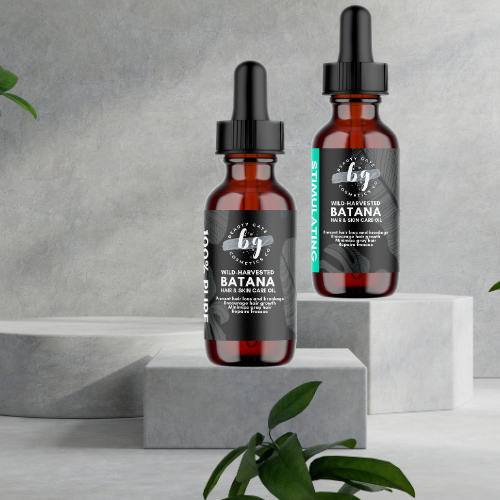Loc Hair Care: Everything You Need to Know
Dreadlocks are a hairstyle in which the hair is sectioned into small sections and then formed into thick, matted ropes. They are a popular choice for people of all hair types and can be worn by people with straight, wavy, curly, or kinky hair. While the process of creating dreadlocks is generally the same for all hair types, there are some differences in the maintenance and styling of dreadlocks based on the specific characteristics of each hair type.
What is the History Behind Locs?
Dreadlocks, also known as locs, have a long and varied history that dates back thousands of years. They have been worn by people of many different cultures and have been associated with a wide range of meanings and symbols.
Some of the earliest recorded instances of dreadlocks can be found in ancient Egyptian artifacts, where they were worn by Pharaohs and other high-ranking officials as a symbol of their status and power. In ancient Greece, dreadlocks were worn by the Orphic cult, a group of mystics who believed in the power of purification through asceticism and ritual.
In more recent times, dreadlocks have been worn by people of many different cultures and have been associated with a wide range of meanings and symbols. In the Rastafarian movement, which originated in Jamaica in the 1930s, dreadlocks were worn as a symbol of resistance to oppression and as a statement of African pride. In the counterculture movements of the 1960s and 1970s, dreadlocks were worn as a symbol of nonconformity and a rejection of mainstream society. Today, dreadlocks are worn by people of all walks of life and are often seen as a statement of personal identity and self-expression.
Type 1 - Straight hair:
People with straight hair may find that it takes longer for their dreadlocks to mature and become fully locked. Straight hair tends to be more slippery, so it may be more difficult for the dreadlocks to stay in place and form tight, matted ropes. To help the dreadlocks mature more quickly and stay in place, it is important to use a strong hold gel or wax when forming the dreadlocks and to avoid using too much conditioner, as this can make the hair too slippery.
Type 2 - Wavy hair:
People with wavy hair may find that their dreadlocks form more easily and mature more quickly than those with straight hair. Wavy hair tends to be more textured and has more natural grip, which can help the dreadlocks stay in place and form tight, matted ropes. To help maintain the shape and definition of the dreadlocks, it is important to use a light hold gel or wax and to avoid using too much conditioner, as this can make the hair too slippery.
Type 3 - Curly hair:
People with curly hair may find that their dreadlocks form easily and mature quickly, but they may also have to deal with more shrinkage than other hair types. Curly hair tends to be more prone to shrinkage, so the dreadlocks may appear shorter when they are styled or wet than when they are dry. To help maintain the shape and definition of the dreadlocks and reduce shrinkage, it is important to use a strong hold gel or wax and to avoid using too much conditioner, as this can make the hair too slippery.
Type 4 - Tighty Curly Hair:
People with kinky curly hair may find that their dreadlocks form easily and mature quickly, but they may also have to deal with more shrinkage and dryness than other hair types. Kinky hair tends to be more prone to shrinkage and dryness, so it is important to use a strong hold gel or wax and to moisturize the dreadlocks regularly to help maintain their shape and prevent dryness. It is also important to avoid using too much conditioner, as this can make the hair too slippery and cause the dreadlocks to unravel.
Regardless of your hair type, it is important to follow a regular maintenance routine to help keep your dreadlocks looking healthy and well-defined. This may include washing the dreadlocks regularly with a residue-free shampoo, moisturizing the dreadlocks with a leave-in conditioner or oil, and using a light hold gel or wax to help maintain their shape and definition. By following these tips and using the right products, you can help your dreadlocks stay healthy and looking their best.
Common Starter Loc Questions
Here are some common questions that people may have when starting dreadlocks:
- How do I start dreadlocks? There are several methods for starting dreadlocks, including the twist and rip method, the crochet method, and the backcombing method. Each method has its own set of steps and may be more suitable for certain hair types. It is a good idea to research the different methods and choose the one that best fits your needs and preferences.
- How long does it take to start dreadlocks? The time it takes to start dreadlocks will depend on the method being used, the thickness and length of the hair, and the number of dreadlocks being created. Some methods may take several hours to complete, while others may take several days. It is important to set aside enough time to start the dreadlocks and to be patient, as the process can be time-consuming.
- Can I start dreadlocks on short hair? It is generally recommended that the hair be at least 3-4 inches long when starting dreadlocks, although some methods may work with shorter hair. If the hair is very short, it may be necessary to wait for it to grow out before starting dreadlocks.
- Will starting dreadlocks damage my hair? Starting dreadlocks can put some strain on the hair, especially if a tight or pulling method is used. However, if the process is done carefully and with the proper precautions, it should not cause significant damage to the hair. It is important to be gentle when starting the dreadlocks and to avoid pulling or tugging the hair too hard.
- How do I maintain my starter dreadlocks? It is important to maintain the dreadlocks regularly to keep them looking clean and healthy. This may involve washing the hair regularly, using a dreadlock-specific conditioner, and keeping the dreadlocks separated and untangled. It is also a good idea to consult with a loctician or stylist for advice on how to best care for your dreadlocks.
Types of Loc Methods
Here is a list of different methods for creating and maintaining dreadlocks:
- Hand-twisting method: This method involves separating the hair into small sections and then twisting and matting the hair using only your hands. This method can be time-consuming, but it is generally considered to be the most gentle and natural way to create dreadlocks.
- Palm rolling method: This method involves separating the hair into small sections and then rolling the hair between the palms of your hands to create the desired shape and texture. This method is generally faster than the hand-twisting method, but it may be more difficult to achieve a perfectly uniform look.
- Backcombing method: This method involves separating the hair into small sections and then using a fine-toothed comb to tease and mat the hair at the roots. This method is generally faster than the hand-twisting and palm rolling methods, but it can be harsh on the hair and may cause damage if done incorrectly.
- Braiding method: This method involves separating the hair into small sections and then braiding each section tightly to create the desired shape and texture. This method is generally gentle on the hair and can be a good option for people with thin or fragile hair.
- Interlocking method: This method involves separating the hair into small sections and then using a crochet hook or latch hook to interlock the hair and create the desired shape and texture. This method is generally faster than the hand-twisting and palm rolling methods, but it can be harsh on the hair and may cause damage if done incorrectly.
- Free-form loc method: Free form locs, also known as "neglect" or "wild" locs, are a type of dreadlocks that are formed naturally without the use of any tools or techniques. This means that the hair is allowed to form into dreadlocks on its own, without being twisted, braided, or manipulated in any way. Free form locs are generally created by simply not combing or brushing the hair and allowing it to form into dreadlocks as it grows. This can be achieved by simply washing the hair regularly and applying a small amount of a natural product, such as coconut oil or shea butter, to help moisturize the hair and encourage the formation of dreadlocks.Free form locs are generally less structured and uniform than other types of dreadlocks, and they may take longer to form and mature. They are often worn as a statement of personal style and as a way to embrace natural hair texture and growth patterns.
- Wick Locs: Wick locs are a type of dreadlock style that is created using a technique called "wicking." This method involves separating the hair into small sections and carefully twisting and coiling the hair around a wick, which can be made from a variety of materials such as string, yarn, or ribbon. The wick helps to hold the hair in place as the locs form, and it can also be used to add tension and control to the locs as they mature. Wick locs are often more defined and uniform in size compared to traditional dreadlocks, and they may be easier to maintain as they do not require as much tightening and maintenance. However, they can be time-consuming to create and may require specialized tools and techniques. If you are interested in trying wick locs, it is a good idea to research the method thoroughly and seek guidance from a skilled stylist or loctician.
No matter which method you choose, it is important to be gentle and patient when creating dreadlocks and to use the right products and techniques to maintain the health of your hair. With regular maintenance and care, your dreadlocks will mature and lock over time, resulting in a healthy and unique hairstyle.
Which is the most popular method loc method?
Today, it is difficult to say which method is the most popular for creating dreadlocks, as different methods may be more popular in different regions or among different groups of people. The hand-twisting and palm rolling methods are generally considered to be the most natural and gentle methods for creating dreadlocks, and they are popular among people who want a more organic and traditional look. The backcombing and interlocking methods are generally considered to be faster and more efficient methods for creating dreadlocks, and they are popular among people who want a more polished and uniform look. The braiding method is generally considered to be a gentler method for creating dreadlocks and is popular among people with thin or fragile hair. Ultimately, the best method for creating dreadlocks will depend on your personal preference, the specific characteristics of your hair, and your desired look and style.
How much shrinkage should I expect following installation of my locs?
Generally, hair that is more tightly coiled or kinky curly will tend to shrink more than hair that is looser or straighter. This is because the hair's natural curl pattern causes it to naturally curl up and become shorter when it is wet. It is important to keep this in mind when starting locs, as the hair may appear much shorter when it is wet than when it is dry.
When can I wash starter locs?
The frequency with which you should wash your starter dreadlocks will depend on several factors, including your personal preference, the specific characteristics of your hair, and your desired look and style.
In general, it is recommended to wash starter dreadlocks every one to two weeks, although this can vary depending on your individual needs. Some people with oily scalp or who live in hot and humid climates may need to wash their starter dreadlocks more frequently, while others may be able to go longer between washings.
It is important to use a residue-free shampoo that is formulated specifically for dreadlocks when washing your starter dreadlocks. Avoid using shampoos that contain sulfates or other harsh chemicals, as these can strip the hair of its natural oils and cause damage. Be sure to rinse the hair thoroughly and apply a conditioner or leave-in treatment to help moisturize and nourish the hair.
Avoid combing or brushing your starter dreadlocks while they are wet, as this can cause tangles and breakage. Instead, use a wide-tooth comb or your fingers to gently detangle the hair and remove any knots or tangles.
By following these tips and using the right products and techniques, you can help keep your starter dreadlocks looking healthy and well-defined. It is important to be gentle when styling and caring for your dreadlocks and to use the right products and techniques to prevent damage and maintain the health of your hair.
Can I use a hairnet to wash my starter locs?
Yes, you can use a hairnet to wash your starter dreadlocks. A hairnet can help to contain the dreadlocks and keep them from getting tangled or matted during the washing process. It can also help to protect the dreadlocks from damage and breakage.
To use a hairnet to wash your starter dreadlocks, follow these steps:
- Section off the hair: Use a rat-tail comb or your fingers to divide the hair into small sections. This will make it easier to apply the shampoo and conditioner and to rinse the hair thoroughly.
- Wet the hair: Wet the hair thoroughly with warm water. This will help to loosen any dirt or build-up and make it easier to clean the scalp and hair.
- Apply shampoo: Apply a small amount of a residue-free shampoo that is formulated specifically for dreadlocks to the hairnet. Use a circular motion to work the shampoo into the hair and scalp. Be sure to avoid scrubbing or scratching the scalp, as this can cause irritation and damage.
- Rinse the hair: Rinse the hair thoroughly with warm water to remove any dirt or build-up. Be sure to rinse the hair thoroughly to ensure that all of the shampoo is removed.
- Apply conditioner: Apply a small amount of a conditioner or leave-in treatment to the hairnet. Use your fingers to work the conditioner into the hair and scalp. Be sure to focus on the ends of the dreadlocks, as this is where the hair is most prone to dryness and breakage.
- Rinse the hair: Rinse the hair thoroughly with warm water to remove any excess conditioner. Be sure to rinse the hair thoroughly to ensure that all of the conditioner is removed.
- Squeeze out excess water: Use a towel to gently squeeze out any excess water from the dreadlocks. Avoid rubbing or wringing the hair, as this can cause tangles and breakage.
- Apply oil or wax: If desired, you can apply a small amount of a leave-in conditioner or oil to the hair to help moisturize and nourish the dreadlocks.
- Style the dreadlocks: Use your fingers or a wide-tooth comb to gently style the dreadlocks as desired. Avoid combing or brushing the dreadlocks while they are wet, as this can cause tangles and breakage.
By following these steps and using the right products and techniques, you can use a hairnet to wash your starter dreadlocks and keep them looking healthy and well-defined. It is important to be gentle when styling and caring for your dreadlocks and to use the right products and techniques to prevent damage and maintain the health of your hair.
Common Mature Loc Questions
Here are some common questions that people may have about mature dreadlocks:
- How do I care for mature dreadlocks? It is important to maintain mature dreadlocks regularly to keep them looking clean and healthy. This may involve washing the hair regularly, using a dreadlock-specific conditioner, and keeping the dreadlocks separated and untangled. It is also a good idea to consult with a loctician or stylist for advice on how to best care for your dreadlocks.
- How often should I retighten my dreadlocks? The frequency of retightening will depend on the age and condition of the dreadlocks, as well as the desired level of maintenance. Some people may need to retighten their dreadlocks every few months, while others may be able to go longer between retightenings. It is generally a good idea to retighten the dreadlocks whenever they start to loosen or unravel.
- Can I dye mature dreadlocks? It is generally possible to dye mature dreadlocks, although the process can be more challenging than dyeing loose hair. It is important to use a dye that is specifically formulated for use on dreadlocks, as regular hair dyes may not penetrate the hair effectively. It is also important to be careful when applying the dye, as the chemicals may cause the dreadlocks to become dry and brittle if left on for too long.
- Can I use styling products on mature dreadlocks? It is generally possible to use styling products on mature dreadlocks, although it is important to choose products that are formulated specifically for use on dreadlocks. Avoid using products that are heavy or greasy, as these can weigh down the dreadlocks and make them look oily or dirty.
- How do I repair damaged dreadlocks? If the dreadlocks become damaged or unravel, it may be necessary to repair them. This can be done by re-twisting the dreadlocks or by using a crochet hook or other tool to reattach any loose strands. It is generally best to seek the help of a loctician or stylist if the dreadlocks are severely damaged or unraveling.
Can I use henna to color my locs?
Henna could be a great option! It's an natural plant-based dye that has been used for centuries to add color and nourishment to hair. Not only does it add color, but henna can also help strengthen and condition your locs, making them look healthier and shinier.
It is important to note that henna is a type of temporary dye made from a plant, and works best on lighter hair colors such as blonde or gray. This is because the dye needs a lighter base color to attach to, and darker hair can block the dye from attaching to the hair. As a result, those with dark hair will not be able to achieve the desired henna hue that they are looking for.
To use henna, start by mixing the henna powder with water to create a paste. The paste should have a yogurt-like consistency. Once the paste is ready, section off your dreadlocks and apply the paste to each dreadlock. Once the henna is applied to your dreadlocks, leave it on for at least two hours. Afterwards, rinse the henna out of your dreadlocks with cold water and then shampoo your hair to remove any remaining henna. Explain: It is important to note that henna can stain your skin and clothing, so it is important to use protective gloves and clothing when applying the paste to your dreadlocks. Additionally, make sure to use cold water to rinse the henna out of your dreadlocks as hot water will set the henna dye and make it difficult to remove.
Q: Expanded: How can I repair damaged locs?
A: Here are some tips for repairing damaged dreadlocks:
- Moisturize: Dry, brittle dreadlocks are more prone to breakage, so it is important to keep your dreadlocks moisturized to help prevent damage. Use a leave-in conditioner or oil to help add moisture and shine to your dreadlocks.
- Use a deep conditioning treatment: A deep conditioning treatment can help to nourish and repair damaged dreadlocks from the inside out. Look for a treatment that is formulated specifically for dreadlocks and that is rich in protein and moisture.
- Avoid harsh chemicals: Harsh chemicals, such as sulfates, can strip the hair of its natural oils and cause damage. Avoid using products that contain harsh chemicals on your dreadlocks, and be sure to use a sulfate-free shampoo and conditioner.
- Use a satin or silk pillowcase: Satin or silk pillowcases can help to reduce friction and breakage when you sleep. Using a satin or silk pillowcase can help to protect your dreadlocks and keep them looking healthy and strong.
- Consult a professional: If your dreadlocks are severely damaged or if you are unsure about how to repair them, it may be a good idea to consult a professional stylist or a dermatologist. They can assess the damage and recommend the best course of action to help repair your dreadlocks.
By following these tips and using the right products and techniques, you can help repair damaged dreadlocks and keep them looking healthy and strong. It is important to be gentle when styling and caring for your dreadlocks and to use the right products and techniques to prevent damage and maintain the health of your hair.
Use of a Loc Tool
A loc tool is a tool that is specifically designed to help create and maintain dreadlocks. It consists of a small, cylindrical tool with a handle on one end and a series of prongs on the other end. The prongs are used to gently separate and twist the hair into small sections, which can then be allowed to form into dreadlocks.
How to Use the Loc Tool
Using a loc tool to create dreadlocks is a quick and easy way to start the dreadlocking process, regardless of your hair type. The process is generally the same for all hair types, but the specific technique may vary based on the texture and density of your hair. Here is a general step-by-step guide for using a loc tool to create dreadlocks:
- Section off the hair into small, evenly sized sections. You can use a rat-tail comb or a hair clip to help separate the hair into sections.
- Take one section of hair and hold it taut between your thumb and the prongs of the loc tool.
- Gently twist the hair around the loc tool, using a back and forth motion to help separate and twist the hair into a small, matted rope.
- Once you have twisted the entire section of hair around the loc tool, gently remove the tool and allow the hair to form into a dreadlock.
- Repeat this process with each section of hair until all of your hair has been twisted into dreadlocks.
- Allow the dreadlocks to mature and lock naturally, or you can use a strong hold gel or wax to help speed up the locking process and maintain the shape of the dreadlocks.
By using a loc tool and following these steps, you can quickly create dreadlocks regardless of your hair type. It is important to be gentle and patient when using a loc tool, as pulling or twisting the hair too hard can cause breakage and damage. With regular maintenance and care, your dreadlocks will mature and lock over time, resulting in a healthy and unique hairstyle.
Is it possible to remove dreadlocks without cutting my hair?
It is generally possible to take dreadlocks out without cutting the hair, although the process can be somewhat time-consuming and may cause some damage to the hair. The best way to remove dreadlocks will depend on the length and thickness of the hair, as well as the age and condition of the dreadlocks. Here are some general steps for removing dreadlocks:
- Wet the hair: Wetting the hair will make it easier to remove the dreadlocks and will help to prevent the hair from breaking or becoming damaged. You can wet the hair using a spray bottle or by wetting it in the shower.
- Detangle the dreadlocks: Use a wide-tooth comb or a special dreadlock comb to gently detangle the dreadlocks. Start at the ends of the hair and work your way up to the roots, being careful not to pull or tug too hard on the hair.
- Loosen the dreadlocks: Use your fingers or a tool such as a crochet hook to gently loosen the dreadlocks. Work your way down the length of each dreadlock, separating the individual strands of hair as you go. This may take some time and may be easier to do if you have someone else help you.
- Shampoo and condition the hair: Once the dreadlocks have been removed, wash the hair using a moisturizing shampoo and conditioner to help restore moisture and nourishment to the hair. You may want to use a deep conditioning treatment to further nourish and hydrate the hair.
- Style the hair as desired: Once the hair has been washed and conditioned, you can style it as desired. Depending on the length and condition of the hair, you may need to trim it or use products such as leave-in conditioner or styling cream to help control frizz and add moisture.
It is important to be gentle and patient when removing dreadlocks, as the hair may be delicate and prone to breakage. If you are not comfortable removing the dreadlocks yourself, you may want to seek the help of a stylist or locticia
Recipe:
Pumpkin + Castor Loc Hair Oil Recipe
Our Pumpkin and Castor Hair Oil is a nourishing blend of natural oils designed to strengthen, moisturize, and promote healthy hair growth. The main ingredients, pumpkin oil, and castor oil are rich in vitamins, minerals, and fatty acids, which help to nourish and protect the hair from damage. The addition of vitamin E oil, a powerful antioxidant, helps to nourish further and protect the hair while also reducing breakage and split ends. This lightweight, non-greasy oil is easy to apply and absorbs quickly, leaving the hair looking and feeling healthy and nourished. It is suitable for all hair types and can be used as a pre-shampoo treatment, leave-in conditioner, or styling oil. Use it regularly to help keep your hair looking and feeling its best.
Equipment:
- Mixing bowl
- Mixing spoon
- Glass jar or bottle with a tight-fitting lid
Ingredients:
- 1/2 cup pumpkin oil
- 1/2 cup castor oil
- 1/4 cup vitamin E oil
Benefits of ingredients:
- Pumpkin oil is rich in vitamins and minerals, including vitamin A, vitamin C, and zinc. It can help to nourish and strengthen the hair, and may also help to promote hair growth.
- Castor oil is rich in fatty acids and has a thick, nourishing consistency. It can help to nourish and moisturize the hair, and may also help to promote hair growth.
- Vitamin E oil is rich in antioxidants and has nourishing and moisturizing properties. It can help to nourish and protect the hair, and may also help to reduce breakage and split ends.
Instructions:
- Mix the ingredients: In a mixing bowl, combine the pumpkin oil, castor oil, and vitamin E oil.
- Blend the mixture: Use a mixing spoon to blend the mixture until it is well combined.
- Transfer to a jar or bottle: Transfer the mixture to a glass jar or bottle with a tight-fitting lid.
- Massage into the hair: Massage the hair oil into the hair, focusing on the ends and any particularly dry or damaged areas.
- Leave the oil in for at least 15 minutes: Leave the oil in for at least 15 minutes, or longer if desired.
- Rinse out or leave in as a leave-in treatment: Rinse out the oil or leave it in as a leave-in treatment.
It is important to keep in mind that these are just general guidelines and that every individual's hair is different. You may need to adjust the amount of ingredients and the length of time the oil is left in based on your hair type and needs. Be sure to use all-natural ingredients and avoid using harsh chemicals or sulfates, as these can strip the hair of its natural oils and cause damage.
Loc Maintenance Tools
There are several tools and products that can be used to help maintain dreadlocks and keep them looking healthy and well-defined. Here is a list of some common tools and products used for dreadlock maintenance:
- Wide-tooth comb: A wide-tooth comb can be used to gently detangle the hair and remove any knots or tangles without causing damage.
- Rat-tail comb: A rat-tail comb can be used to section off the hair and create precise partings when styling the dreadlocks.
- Dreadlock wax or gel: A dreadlock wax or gel can be used to help hold the shape of the dreadlocks and add shine. It is important to choose a product that is free from harsh chemicals and that is formulated specifically for dreadlocks.
- Dreadlock shampoo: A dreadlock shampoo is a residue-free shampoo that is formulated specifically for dreadlocks. It helps to clean the hair and scalp without stripping the dreadlocks of their natural oils.
- Dreadlock conditioner: A dreadlock conditioner is a moisturizing conditioner that is formulated specifically for dreadlocks. It helps to nourish and moisturize the hair and scalp and can help prevent dryness and breakage.
- Dreadlock spray: A dreadlock spray is a leave-in conditioner or oil that is formulated specifically for dreadlocks. It helps to moisturize and nourish the hair and scalp and can help add shine and protect the hair from damage.
By using these tools and products and following a regular maintenance routine, you can help keep your dreadlocks looking healthy and well-defined. It is important to be gentle when styling and maintaining your dreadlocks and to use the right products and techniques to prevent damage and maintain the health of your hair.
